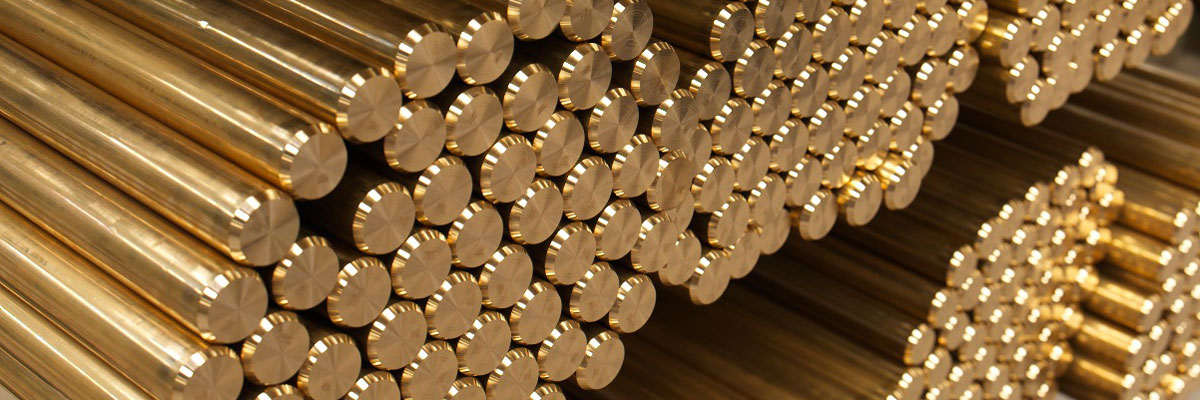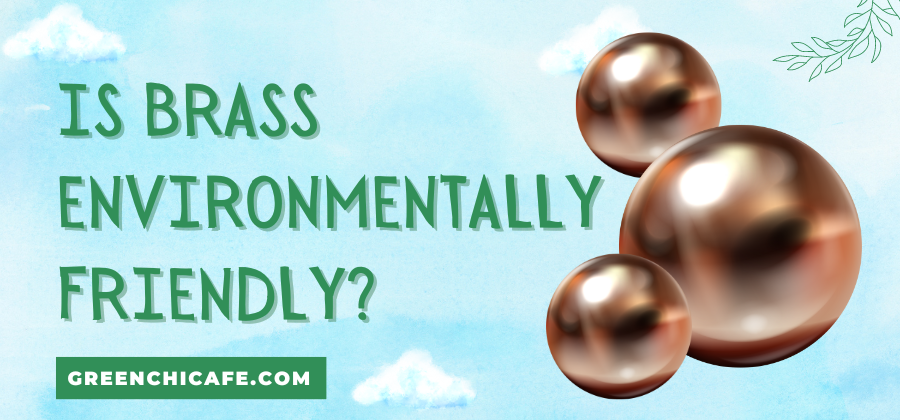Last Updated on June 3, 2024 by Annie Baldwin
Brass is worth learning more about if you care about sustainable materials.
With its recyclability and lower carbon footprint compared to other metals, brass has some strong environmental credentials.
But we need to look closer to see if it’s as eco-friendly as it seems.
Is Brass Environmentally Friendly?

Brass is moderately environmentally friendly due to its recyclability.
Brass can be recycled repeatedly with minimal loss of quality.
This makes it more sustainable than other metals.
However, brass is not biodegradable and some alloys contain lead which can pollute if disposed of improperly.
Proper recycling is key to maximizing its eco-friendly attributes.
Key Points
- Brass is highly recyclable with no loss of quality
- Brass is not biodegradable and persists for thousands of years
- Some brass alloys contain small amounts of lead
Our Opinion
While brass is one of the more eco-friendly metals due to its sustainability and recyclability, it is not without some environmental concerns.
Proper recycling is essential to minimize brass’s footprint.
We believe brass can be an environmentally responsible material with proper use and disposal.
Is Brass Recyclable?

Brass is highly recyclable without loss of quality. This copper-based alloy can be recycled repeatedly into new brass products. Recycling brass takes less energy than producing new brass from raw materials, giving it a smaller carbon footprint than metals like aluminum or steel.
The recyclability of brass is a major plus for its green reputation. But there are also some limitations:
- Brass products often contain lead and other metals that make recycling more complicated.
- Not all brass ends up being recycled since it can last a very long time.
- Brass that ends up in landfills can release toxic substances as it slowly breaks down.
While clearly recyclable, maximizing brass recycling is key to improving its eco-friendly credentials.
What Is Brass’s Carbon Footprint?

Brass has a lower carbon footprint than other common metals like steel or aluminum. Producing brass requires less energy overall, resulting in fewer greenhouse gas emissions. Some key advantages of brass include:
- Brass production emits less CO2 than steel or aluminum. The base metals in brass, copper, and zinc, require less energy to extract and process.
- Recycling brass is very energy efficient compared to extracting new metal. This further reduces the carbon footprint over the life cycle of brass products.
- Brass is highly durable and corrosion-resistant, so products often last a very long time before needing to be replaced. This maximizes the material’s use and minimizes waste.
However, brass production still has environmental impacts to consider:
- Mining and smelting the metals in brass can pollute air, soil, and water near production facilities if not properly controlled.
- Some brass alloys contain lead, a toxic heavy metal that must be handled carefully.
- The carbon footprint depends on the specific alloy – higher zinc content reduces the energy needed for production.
Overall, when compared to other metals, brass is generally considered a lower-carbon option. But it is not zero carbon. Maximizing efficiency, recycling and responsible production practices are important for improving brass’s sustainability profile.
Does Brass Have Negative Environmental Impacts?
While brass is more eco-friendly than many metals, it does still have some negative impacts on the environment that should be considered:
- Mining copper and zinc ores disturb land and can lead to soil erosion and water contamination when not properly managed. Smelting the ores releases sulfur dioxide emissions that contribute to air pollution and acid rain.
- Certain brass alloys contain lead, which is toxic if released into the environment. Lead exposure harms human health and wildlife. Responsible recycling and disposal of leaded brass is essential.
- Manufacturing brass requires significant energy for mining, smelting, alloying, and working the metal. The carbon emissions from fossil fuel use contribute to climate change. However, brass still compares favorably to metals like steel or aluminum in terms of energy use.
- Brass production generates waste byproducts and scrap metal that must be disposed of properly to avoid pollution. Recycling brass effectively helps minimize waste.
- While brass itself is not hazardous waste, some of the chemicals used to machine, coat, or clean brass products can be toxic if released. Proper handling of brass-working fluids is important.
- Even though brass is highly durable and recyclable, some brass products or scraps inevitably end up in landfills. This wastes resources and energy invested in producing the brass.
The environmental advantages of brass over other materials are maximized when production and product life cycles are efficiently managed. Responsible manufacturing, use, and recycling help minimize brass’s impacts. However, some negative consequences are inherent to brass production.
Is Brass More Sustainable Than Other Metals?
Brass has some significant sustainability advantages over other common metals:
- Brass is highly recyclable, with over 80% of brass scrap recycled. This reduces waste and the need for new raw material extraction. Many metals like steel or aluminum are also recyclable but at lower rates than brass.
- Recycled brass retains its material properties and can be remelted and reshaped repeatedly into new products. This preserves the energy invested in initially producing the brass.
- Brass is more corrosion-resistant than steel or iron. Brass products tend to last longer with less maintenance needed, extending product lifetimes.
- Brass manufacturing has lower carbon emissions per ton than steel or aluminum production. The copper and zinc ores used require less energy to smelt than iron or bauxite.
- Brass is durable and antimicrobial, ideal for applications like door handles, taps, and railings. This reduces the need for replacement and limits the spread of germs.
- Brass production utilizes copper and zinc, metals with reserves to meet demand. Some metals like cobalt face future supply risks that brass avoids.
- Brass alloys can substitute for scarce metals like nickel and chromium in some applications, conserving rarer resources.
- Brass products can often be used for decades or recycled indefinitely. Other materials like plastics or concrete degrade over time.
Maximizing these advantages relies on responsible production, use, and recycling of brass. But overall, brass is one of the more sustainable metal choices from an environmental perspective. The green credentials of brass make it a better option than many competing materials.
How Does Brass Compare to Other Metals for Environmental Friendliness?
When evaluating the eco-friendliness of different metals, brass stands out as an excellent choice:
- Brass has higher recyclability than metals like steel, iron, or aluminum. Over 80% of brass scrap is recycled, reducing waste.
- The brass recycling process is less energy-intensive than producing new brass. This results in lower carbon emissions compared to primary production.
- Brass alloys utilize copper and zinc, metals with abundant global reserves that can meet demand sustainably. Some metals like cobalt or rare earths face supply constraints.
- Brass is durable, corrosion-resistant, and antimicrobial. Products last longer with less maintenance, extending lifetimes and reducing replacement needs.
- Brass can substitute for scarcer metals like nickel or chromium in certain applications. This helps conserve resources that are rarer or harder to obtain.
- Brass manufacturing requires lower energy input per ton than steel or aluminum. The ores smelted for brass production are less energy-intensive.
- Brass products are often reusable or recyclable indefinitely, unlike materials that degrade over time such as plastics.
- Responsible production, use, and recycling of brass maximize sustainability. But overall, brass outperforms most metals in several eco-friendly aspects.
No metal production has zero impact. But brass offers significant environmental advantages over other common metals due to its unique material properties. When evaluating metal sustainability, brass stands out as an excellent green choice.
FAQ
Is Brass Harmful to the Environment?
Brass is generally considered an environmentally friendly metal due to its recyclability. However, some brass alloys contain small amounts of lead which can leach into the environment if disposed of improperly.
Does Brass Biodegrade?
No, brass does not biodegrade. Like most metals, brass can persist in the environment for thousands of years if not recycled.
Conclusion
Brass is generally considered an environmentally friendly metal due to its recyclability and sustainability. Brass can be recycled multiple times with minimal loss of quality or purity. This makes brass more eco-friendly than other metals like steel or aluminum. However, brass is not biodegradable and some alloys contain small amounts of lead. Proper recycling is important to minimize brass’s environmental impact. Overall, the recyclability and sustainability of brass make it one of the more environmentally friendly metals available today.
